Matador Network's Blog, page 467
June 7, 2022
Rockhounding in Nevada: Everything You Need To Know
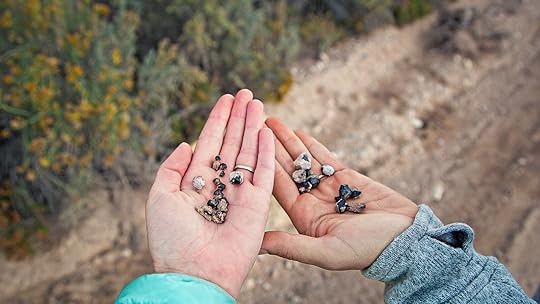 Rockhounding in Nevada: Everything You Need to Know
Rockhounding in Nevada: Everything You Need to KnowBy: Hannah Singleton
Photo: Sydney Martinez/TravelNevadaWe’ll admit it: rockhounding — collecting and digging for rocks, gems, and fossils — is a pretty niche hobby. But in Nevada, spending the day searching for little bits of natural history can be the perfect way to connect with the great outdoors. As you excavate, you’ll hear the pattering footsteps of lizards and smell the herbal aroma of sagebrush. Plus, the thrill of cracking open a slab of shale to reveal a trilobite fossil or unearthing a gorgeous nugget of turquoise is infectious. Once you find your first gemstone, you’ll wonder why you didn’t start rockhounding earlier.
Nevada contains more than 48 million acres of public land, and although you can’t rockhound on all of it, there sure is a lot to explore. You could also learn to rockhound at one of the dozens of pay-to-dig sites around the state — it’s called the Silver State, remember. Here’s how (and where!) to get in on Nevada’s many buried treasures, whether you’re a rookie rockhound or a tried-and-true veteran.
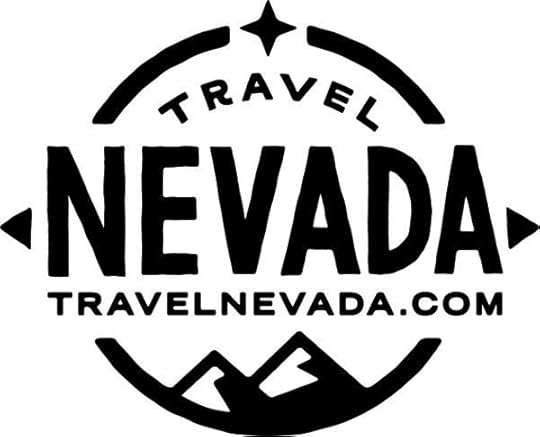
This post is proudly produced in partnership with Travel Nevada.
On the Hunt: Where to Go Rockhounding in Nevada Rockhounding at Garnet Hill Tonopah Turquoise Oak Springs Trilobite Area Rocks from Gemfield With a bit of research (the best place to start is right on Travel Nevada’s website), you’ll find dozens of rockhounding destinations in Nevada, but these are some of the standouts:
Virgin Valley (Denio, Northern Nevada). Black fire opal, a dazzling gem that contains a rainbow of colors against a dark background, is only found in a few locations in the world — and Nevada’s Virgin Valley is one of them. Choose a pay-to-dig site (we recommend Rainbow Ridge, Royal Peacock, or Bonanza opal mines) for your chance to unearth one of these rare beauties.
Red Rock Canyon NCA (Las Vegas area, Southern Nevada). It’s all in the name — hike the 2.5-mile Fossil Canyon/Fossil Trail loop, and you’ll be walking amongst an ancient sea of sponges, shells, corals, and crinoids. While it’s illegal to collect vertebrate fossils without a permit from the BLM, it’s perfectly fine to seek out invertebrate fossils like these!
Black Rock Desert (Gerlach, Northwestern Nevada). The mysteries of the Black Rock Desert go well beyond Burning Man: With a 4WD vehicle, hit the eastern slopes of the South Black Rock Range, just northwest of Sulphur, to scout for geodes off old mining roads. A bit further west is the Calico Mountains Wilderness, where petrified wood deposits can be found in the aptly named Petrified Canyon. (Yep, you’re clear to rockhound petrified wood, too!)
Oak Springs Trilobite Area (Caliente, Southeastern Nevada). Millions of years ago, tiny, prehistoric trilobites (picture a dime-sized horseshoe crab) were perfectly preserved in the silty sediment of the Great Basin. Today, Oak Springs Trilobite Area holds these fossils in droves, if you know how to look. You won’t find many amenities here, so bring what you need for the day, but you’re free to keep any specimens you find.
Garnet Hill (Ely, Eastern Nevada). Garnet Hill is a BLM recreation area, and there aren’t any pay-to-dig mines here — instead, this is a free-to-take site (yep, free gems!). It’s a great entry-level location because you can often find dark red spessartine garnets simply by grooming the ground. The area is also rich in volcanic rhyolite. With four picnic areas with grills, it’s a great place for the entire family to spend the day.
Otteson Brothers Turquoise Mine (Tonopah, Central Nevada). If turquoise is what you’re after, head to the most popular destination in the state for the gemstone: the Otteson Brothers Turquoise Mine in Tonopah. Sort through turquoise in every shade of blue-green until you find the perfect hue for you. Visitors can take home up to a bag of turquoise. Just be sure to make a reservation in advance — this spot is popular for its world-class colors. Half-day rates start at $150, while a full day will run you $300 per person.
Gemfield (Goldfield, Central Nevada). Chalcedony, agate, jasper, gold, silver — the mineral diversity of the aptly named Gemfield site is unrivaled. This one’s ideal for a more experienced adventurer looking for a remote experience amidst the sagebrush steppe. You’ll need a high-clearance vehicle and some wilderness know-how — there are no services (including public restrooms) in the immediate vicinity. Bring dollar bills, as it’s $1 per pound whatever you take, cash only via the honor system.
Berlin-Ichthyosaur State Park (Austin, Central Nevada). Preserving the country’s largest concentration of ichthyosaur (a giant fish-like dino) fossils and one ghost town, this state park is unlike any other. And while it’s against the rules to rockhound in the park itself, consider it your fossil-hunting basecamp. If you’re up for adventure, scope out nearby rock-cuts and old mines and see if you strike it lucky.
.map * { font-family: sans-serif !important;}.info-window-link { display: block; margin-top: 10px; padding: 3px 10px; border-radius: 3px; background-color: #0099ff; color: white !important; font-size: 12px; text-align: center;}.info-window-link:hover { text-decoration: none;}var _icons = { red: { url: 'https://travelstoke.s3.amazonaws.com/...', size: { width: 22.8, height: 35.4 }, anchor: { x: 11.4, y: 35.4 } }, orange: { url: 'https://travelstoke.s3.amazonaws.com/...', size: { width: 22.8, height: 35.4 }, anchor: { x: 11.4, y: 35.4 } }, yellow: { url: 'https://travelstoke.s3.amazonaws.com/...', size: { width: 22.8, height: 35.4 }, anchor: { x: 11.4, y: 35.4 } }};var _styles = { travelstoke: [ { featureType: 'administrative', elementType: 'geometry.stroke', stylers: [{ color: '#999999' }] }, { featureType: 'landscape.natural.terrain', elementType: 'geometry', stylers: [{ visibility: 'off' }] }, { featureType: 'poi.business', elementType: 'all', stylers: [{ visibility: 'off' }] }, { featureType: 'road', elementType: 'geometry.stroke', stylers: [{ color: '#ffffff' }] }, { featureType: 'water', elementType: 'geometry', stylers: [{ color: '#53acce' }] } ], desert: [{"elementType":"labels","stylers":[{"visibility":"off"},{"color":"#f49f53"}]},{"featureType":"landscape","stylers":[{"color":"#f9ddc5"},{"lightness":-7}]},{"featureType":"road","stylers":[{"color":"#813033"},{"lightness":43}]},{"featureType":"poi.business","stylers":[{"color":"#645c20"},{"lightness":38}]},{"featureType":"water","stylers":[{"color":"#1994bf"},{"saturation":-69},{"gamma":0.99},{"lightness":43}]},{"featureType":"road.local","elementType":"geometry.fill","stylers":[{"color":"#f19f53"},{"weight":1.3},{"visibility":"on"},{"lightness":16}]},{"featureType":"poi.business"},{"featureType":"poi.park","stylers":[{"color":"#645c20"},{"lightness":39}]},{"featureType":"poi.school","stylers":[{"color":"#a95521"},{"lightness":35}]},{},{"featureType":"poi.medical","elementType":"geometry.fill","stylers":[{"color":"#813033"},{"lightness":38},{"visibility":"off"}]},{},{},{},{},{},{},{},{},{},{},{},{"elementType":"labels"},{"featureType":"poi.sports_complex","stylers":[{"color":"#9e5916"},{"lightness":32}]},{},{"featureType":"poi.government","stylers":[{"color":"#9e5916"},{"lightness":46}]},{"featureType":"transit.station","stylers":[{"visibility":"off"}]},{"featureType":"transit.line","stylers":[{"color":"#813033"},{"lightness":22}]},{"featureType":"transit","stylers":[{"lightness":38}]},{"featureType":"road.local","elementType":"geometry.stroke","stylers":[{"color":"#f19f53"},{"lightness":-10}]},{},{},{}]};window.addEventListener('load', function() { console.log('test'); jQuery(document).ready(function($) { var boundPadding; var id = 'map-62a071295220a'; var atts = {"lat":"38","lng":"-116","zoom":"6"}; var markers = [{"lat":"36.569921","lng":"-114.334330","title":"Virgin Valley"},{"lat":"37.613644","lng":"-114.711189","title":"Oak Springs Trilobite Area"},{"lat":"39.284022","lng":"-114.952786","title":"Garnet Hill"},{"lat":"38.069531","lng":"-117.227582","title":"Tonopah"},{"lat":"40.816772","lng":"-119.008674","title":"Black Rock Desert"},{"lat":"36.120904","lng":"-115.430834","title":"Red Rock Canyon National Conservation Area"},{"lat":"37.740263","lng":"-117.295167","title":"Gemfield"},{"lat":"38.872131","lng":"-117.593156","title":"Berlin-Ichthyosaur State Park"}]; var map = new google.maps.Map(document.getElementById(id), { mapTypeId: google.maps.MapTypeId.ROADMAP, disableDefaultUI: true, zoomControl: true, scrollwheel: false, zoomControlOptions: { style: google.maps.ZoomControlStyle.LARGE, position: google.maps.ControlPosition.LEFT_CENTER } }); if (atts.style && _styles[atts.style]) map.setOptions({ styles: _styles[atts.style] }); if (atts.padding !== undefined) boundPadding = parseInt(atts.padding); var mapBounds; if (atts.lat !== undefined && atts.lng !== undefined) { // Use lat and lng if provided map.setCenter({ lat: parseFloat(atts.lat), lng: parseFloat(atts.lng) }); } else if (markers && markers.length) { if (markers.length === 1) { // Use lat lng from first marker if only 1 provided map.setCenter({ lat: parseFloat(markers[0].lat), lng: parseFloat(markers[0].lng) }); } else { // With multiple markers create a boundry that includes all of them mapBounds = new google.maps.LatLngBounds(); } } var labels = 'ABCDEFGHIJKLMNOPQRSTUVWXYZ'; var labelIndex = 0; if(atts.offset !== undefined) { labelIndex = parseInt(atts.offset); } var infoWindow = new google.maps.InfoWindow({ content: '' }); var openInfoWindow = function(marker, target) { var info = $('<div>', { style: 'max-width:150px' }); $('<div>').append(marker.title).appendTo(info); if (marker.scroll_to) { $('<a>', { class: 'info-window-link', href: '#' marker.scroll_to, }).append('Jump To').appendTo(info); } infoWindow.setContent(info[0].outerHTML); infoWindow.open({ anchor: target, map: map, shouldFocus: false }) }; $('#' id).on('click', '.info-window-link', function(e) { console.log('info window'); e.preventDefault(); var target = $(e.target).attr('href'); $('html, body').animate({ scrollTop: $(target).offset().top - 55 }, 1000); }); for (var i = 0; i < markers.length; i ) { var marker = markers[i]; if (marker.lat !== undefined && marker.lng !== undefined) { var markerObject = { map: map, position: { lat: parseFloat(marker.lat), lng: parseFloat(marker.lng) }, animation: google.maps.Animation.DROP, locationId: i, } if(atts.ordered !== undefined) { if(atts.numbered !== undefined) { number = labelIndex = labelIndex 1; markerObject.label = number.toString(); } else { markerObject.label = labels[labelIndex % labels.length]; } } if(marker.icon !== undefined) { markerObject.icon = marker.icon; } var mapMarker = new google.maps.Marker(markerObject); if (mapBounds) mapBounds.extend(mapMarker.getPosition()); if (marker.title) { var infowindow = new google.maps.InfoWindow({ content: marker.title }); if (markers.length === 1) { setTimeout(function() { openInfoWindow(marker, mapMarker); }, 1200); } google.maps.event.addListener(mapMarker, 'click', function() { openInfoWindow(markers[this.locationId], this); }); } } } if (mapBounds) { map.fitBounds(mapBounds, {top:boundPadding, right:boundPadding, left:boundPadding, bottom:boundPadding}); } else if (atts.zoom) { map.setZoom(parseInt(atts.zoom)); } else { map.setZoom(16); } });});Photo credits: Sydney Martinez/TravelNevada
Get started: How to be a rockhound Tools of the trade Historic Mining Park in Tonopah Nevada's rich geologic history Great Basin NP from Wheeler Peak You may know Nevada as one of the nation’s top producers of gold and silver, but the state is also home to an incredible array of gems, minerals, and fossils. From garnets to trilobites to black fire opals, there’s a treasure trove of specimens waiting to be discovered at the strike of a hammer.
Wait, why is Nevada so great for rockhounds? In short, the state has a deep and varied geologic history that has allowed for the formation of both fossils and gemstones — the best of both worlds. Visit Las Vegas’s Springs Reserve, which includes the Nevada State Museum, for a deep, hands-on geologic dive, from greeting Nevada’s state fossil, the ichthyosaur, to stepping inside a stalactite cave.
What gear do I need? In Nevada, DIY means “dig-it-yourself.” Rockhounding is a great beginner activity because you don’t need much to get started. In fact, if you opt for a pay-to-dig operation, you can rent everything you need onsite. However, if you’re venturing out on your own, here are the basics to pack in with you:
A rockhammer to help break up large rocksA bucket to transport your treasures so you can take them homeProtective footwear with good traction for all that rocky terrain Safety equipment, like work gloves to protect your hands and safety glasses to keep rock particles out of your eyes Sun protection, including sunscreen, a sun hat, and a sun shirt, all essentials under the hot desert sun Plenty of water…goes without saying for any outdoor fun in Nevada!When you’re ready to take your rockhounding to the next level, you may want to consider some additional gear:
Hand tools, like a chisel or screwdriver, to break down rocks with more accuracy A spray bottle to expose hidden patterns and textures in rocksA brush to dust off your specimensA magnifying glass to be extra preciseA kneeling pad to keep you comfortableGarden tools, like a shovel or rakeHow do I prepare? Many pay-to-dig sites offer half- and full-day rates so you can search for gems at their mines. They often have rental gear and offer safety instructions and hunting tips to make the most of your experience. However, some sites, like the Otteson Brothers Turquoise mine in Tonopah, require that you bring your own tools. Check with the mine ahead of time so you know what to expect.
Rockhounding on public lands, rather than at a commercial site, is a rewarding experience. You can escape the crowds and experience solitude in the outdoors while finding unique specimens. But it does require a bit more patience and know-how. Be prepared for quick weather changes, navigating rocky terrain, and encounters with prickly plants or poisonous animals.
No matter where you hunt, pack for a long day in arid conditions. Bring plenty of water, snacks, and sun protection, and always leave no trace.
Photo credits: Lonnie Paulson/Shutterstock, Dominic Gentilcore PhD/Shutterstock, Sydney Martinez/TravelNevada, and Arlene Waller/ShutterstockFinding Treasure: Tips and Tricks Mining for opal Trilobites are in there somewhere Polished opal stone Small geologic treasures Once you’ve decided where you’re going and what gear to pack, you’ll need tips for a successful rockhounding expedition. No going home empty-handed, alright?
Know what you’re looking for. If you want the best chance of bringing home some serious treasure, brush up on your geology. You’re probably looking for something specific — a quick Google search can provide enough info so that you’re familiar with the specimen’s appearance and how it arises. For example, fossils are almost exclusively found in sedimentary rock, like sandstone, because it’s formed through a long, slow process without the heat and pressure that would destroy a fossil. When you’re hunting for a trilobite, for instance, you shouldn’t be wandering volcanic terrain.
Know where to look, too. Different sites and searches require totally different tactics. Do you need to dig into the earth to find geodes, crack open shale to reveal a fossil, or rake the ground to turn up garnet crystals? For a spot to practice training your eye, visit Tule Springs Fossil Beds National Monument. While it’s illegal to take specimens from here, the ground is littered with fossils near the surface — if you bother to look! (Tip: Connect with the Protectors of Tule Springs for a guided tour.)
Know how to use your tools. When it comes to wielding your rockhounding tools, use them wisely. The number one rule? Don’t go too hard. You’ll employ the rockhammer to crack open rocks, not smash them to smithereens. Then, if and when you find a gemstone, you can use hand tools to delicately extract it. Lastly, whip out the spray bottle or brush to remove dust, clean off the crystals, or illuminate subtle markings in your specimen.
Show off your Nevada treasure. Once you’ve nabbed your bounty, it’s up to you what you do with it! Many visitors make their finds into one-of-a-kind jewelry or display them at home. However you choose to show off your Nevada souvenirs, you should clean them first by soaking them in soapy water and using a toothbrush to get rid of any remaining dirt. The result can be a real showpiece. How’s that for hitting the jackpot?
Photo credits: Sydney Martinez/TravelNevada

This post is proudly produced in partnership with Travel Nevada.
Watch: An Incredibly Rare Rainbow Waterfall Lit Up Yosemite Falls for 8 Minutes
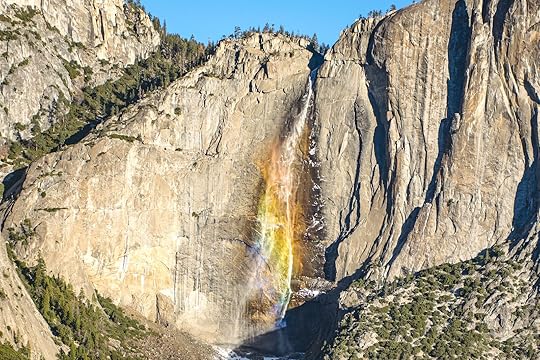
Yosemite is full of beauty, but few things can match a rainbow waterfall. In a video shot a couple of years back and recently resurfaced on Twitter, you can see the rare phenomenon in slow motion.
The video was originally shot by photographer Greg Harlow in Yosemite National Park.
“This phenomenon lasted over 8 minutes,” Harlow explained in an Instagram post in 2019. “This is how the 1400’ Yosemite Falls rainbow looked from Glacier Point in real time. This certainly was not a planned event. I spent over 3 months total in Yosemite last year and just got lucky. For those asking…this happened November 1st, at 9:15 AM.”
It took two unusual circumstances for this to happen, according to Harlow’s video caption. One is that there were high winds in the area at just the right time of day, and the other was unusually heavy water flow for November.
According to SF Gate, Harlow was there to shoot the fall at sunrise when he saw it turn red and then the full spectrum of the rainbow. Only about 10 other people saw it happen. No doubt Harlow has seen plenty of incredible things in nature in his line of work, but he called this one “the most jaw dropping moment of my career so far.”
If you’re looking for a Yosemite waterfall phenomenon that’s a little more regular, there’s always the February “firefall” that lights up Horsetail Fall for about two weeks. 
The 11 Best Beaches in Connecticut
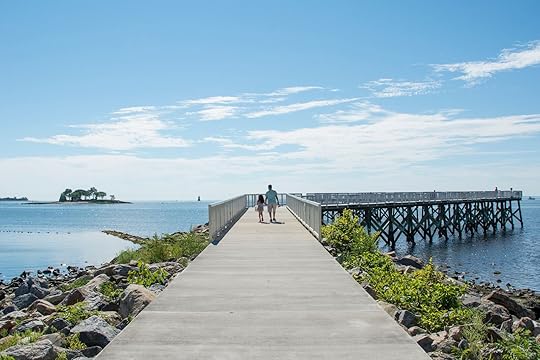
Connecticut beaches are often passed over for those in neighboring states. New York has the Hamptons, Rhode Island has its surfing beaches, and Massachusetts has Cape Cod. But Connecticut has nearly a hundred miles of coastline, with plenty of sandy beaches dotted across its length. And since the shoreline of Connecticut runs east to west along the Long Island Sound, most of its beaches have calm, swimmable waters.
Any beach in Connecticut that belongs to a city or the state must be public by law – although cities can charge higher parking fees to non-residents. This helps keep Connecticut’s many beaches from getting too crowded and pays for amenities like outdoor showers and changing rooms. Fees aside, the real issue is that there are so many public beaches it can be hard to know which ones to visit.
These 11 options are the best beaches in Connecticut for a New England beach weekend.
1. Waterford Beach Park in WaterfordAt the far east end of the Long Island Sound, near Fishers Island, is Waterford Beach Park, an area worth visiting for its natural hills, tidal marshes, and dune grass. You’ll find everything you need at the beach, from lifeguards to restrooms. Bring your own lunch to enjoy at the lovely picnic area, there are nearby tennis courts and a place to launch your kayak. You can buy a daily pass at the gate before entering the park. It’s best to come early in the summer, as the parking area fills up. From June to September, pooches are not allowed. However, while it may be too cold for swimming come October, you and your dog can admire the stunning fall colors of the park’s trees up against the water.
Cost for parking: Day passes are $2 on weekdays and $5 on weekends and holidays for residents (or a $1 walk-in fee), and $20 on weekdays and $30 on weekends and holidays for non-residents (or a $5 walk-in fee).
2. Harvey’s Beach in Old SaybrookNot much bigger than Hole in the Wall Beach, Harvey’s Beach is only about the length of a football field. Yet it remains a well-loved beach for its vast tidal pools and natural feel. You’ll find all the necessary amenities here that you would find at bigger beaches, from restrooms and changing rooms to outdoor showers and a lifeguard on duty. From Memorial Day to Labor Day, you can buy food at the beach and, on Friday nights in good weather, enjoy an outdoor concert.
Cost for parking: Parking is $15 per car on weekdays and $25 on weekends. Non-residents can buy a season pass for one car for $150.
3. Hammonasset Beach State Park in Madison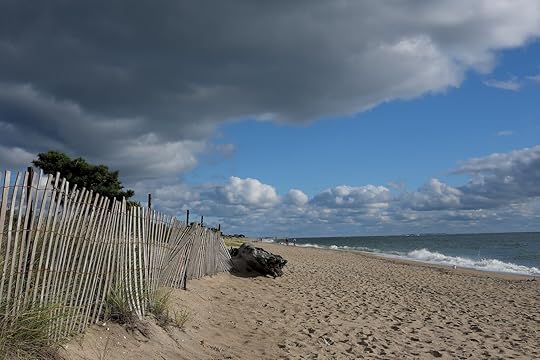
Photo: Esther Tatiana/Shutterstock
Located about 20 miles west of New Haven, the two-mile-long Hammonasset Beach lies on a spit of land that juts into the Long Island Sound. The beach has been a state park for over a century and is one of the most loved summer destinations in Connecticut. Visitors can put a towel on the sand, walk along the boardwalk, picnic on shaded tables by the grass, or hike along several trails through the leafy Hammonasset Natural Area Preserve.
The nature preserve is at the end of the spit of land, as is the Meigs Point Nature Center that’s open every day except Mondays. In July and August, the center offers several programs throughout the day, including nature walks, canoe trips, and presentations about turtles or snakes.
Camping on the beach park’s 550 grassy sites usually opens in time for Memorial Day weekend and ends after the long October weekend celebrating Indigenous Peoples Day. Hammonasset Beach is also great for swimming, and has several designated swimming areas. It sits at the far end of the Long Island Sound, closer to the open Atlantic, but the shore is protected from ocean waves by a breakwater at Meigs Point that was built in 1955.
Cost for parking: In the summer, it’s $9 for locals and $15 for non-residents on weekdays, and $13 for locals and $22 for non-residents on weekends and holidays.
4. Hole in the Wall Beach in East LymeAt the opposite end of the spectrum, length-wise, is Hole in the Wall Beach in East Lyme. It’s not just the wee size that lends charm to this beach on Niantic Bay, but also its location within the 62-acre McCook’s Point Park. It lies on one side of a grassy, wooded bluff, which you can cross to reach the larger McCook’s Beach. Beyond the park and beaches, you’ll find old New England homes. Note that there aren’t any stores, which keeps these beaches feeling more intimate. What also keeps them feeling more personal is the hefty price tag for non-residents. You can come in late spring or early fall free of charge, but from the Saturday of Memorial Day weekend to Labor Day, you’ll need a parking permit.
Cost for parking: Residents pay $15 for the day or $45 for the entire summer season. Non-residents pay $40 for a day pass during the week and $50 on weekends. Check the East Lyme site for more information.
5. Weed Beach in DarienThis beach wasn’t named after the smokeable type of weed, but any other kinds of weeds on the impeccably manicured lawn behind the beach are long gone. Weed Beach is located in one of the wealthiest and preppiest cities in the state. You’ll find folks playing tennis or pickle ball on the courts in this 22-acre park. A concession stand, washrooms, changing rooms, picnic tables, and an adorable children’s play area that looks like a boat are additional on-land offerings. There’s a place to launch your boat or windsurf. This is also the site of the Darien Junior Sailing team, where teens presumably hone their skills in the hope of getting the attention of a sailing coach in the Ivy League. Day passes are available, and dogs aren’t allowed.
Cost for parking: $53 per day per car for non-residents.
6. Jennings Beach in FairfieldThis 27-acre beach makes for an unfussy family day at the beach, with plenty of sand, a playground that looks like an oversized sand castle, a skateboard park, and volleyball courts. You’ll find the other conveniences you need, like washrooms and a concession stand. In the summer, the lifeguards offer swim lessons and junior lifeguard courses for those who sign up in advance on the Fairfield Parks & Recreation site. Come outside of summer months and you won’t just avoid the parking fees, but you can also bring your dog to enjoy the beach with you.
Cost for parking: Summer parking passes are typically expensive, at $40 on weekdays and $50 on weekends.
7. Ocean Beach Park in New London
Photo: Ritu Manoj Jethani/Shutterstock
This hugely popular beach park includes not only plenty of sand and all the amenities, but an Olympic-sized swimming pool ($10 per use) and enough attractions that, if you have kids, they’ll never want to go to another beach. This includes waterslides ($10 for the whole all day), an arcade, mini golf ($8), and a playground. If you’ve come without little ones in tow, you may prefer to walk on the trails or catch evening entertainment on the boardwalk.
Cost for parking: From Memorial Day weekend to Labor Day, parking costs $25 on weekdays and $30 on weekends. On July 4, parking is $40. Even pedestrians pay $8 to walk in. Parking is $10 the rest of the year.
8. Sandy Beach in LitchfieldIf you find yourself in the northern part of Connecticut this summer, you can still cool off in the freshwater of Bantam Lake. Lovely Litchfield is a stunning stretch of the state that is sometimes known as the “other Berkshires,” since it’s part of the same gently rolling mountain range as the Berkshires in Massachusetts. You’ll find photogenic towns, covered bridges, lots of trees, and swimmable lakes in these parts. Sandy Beach at Bantam Lake has everything you need at a beach: bathrooms, a lifeguard, volleyball, picnic areas, and a concession stand. Locals who summer here also sign up their kids for six-week-long swimming lessons in the lake, so you may see a bit of splashing and hear plenty of laughter.
Cost for parking: Cars and boats only $10 weekdays and $20 on weekends.
9. Jacob’s Beach in GuilfordThis 25-acre beach doesn’t tend to draw the same summer crowds as you may find elsewhere, which is what earns it a spot on this list. The lack of crowds has more to do with its off-the-beaten-path location than its facilities, which cover all the basics and then some. Jacob’s Beach has showers and washrooms, plus a boardwalk, playground, volleyball court, and a half basketball court. It’s also a great place for kayaking.
Cost for parking: $20 for a parking pass for the day.
10. Sound View Beach in Old LymeThe only real reason to come to this sliver of sand is for the history. Sound View Beach became one of the first public beaches in the country when it opened up in the 1880s, but it’s just 100 feet across and flanked on either side by miles of beach that’s privately owned. Even so, this place is popular.
Cost for parking: $6 for every two hours on weekdays and $10 per two hours on weekends and holidays.
11. Calf Pasture Beach and Shady Beach Park in Norwalk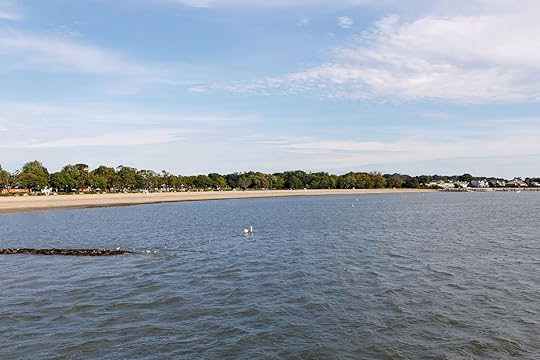
Photo: Richard A. McGuirk/Shutterstock
Calf Pasture Beach offers not just Long Island Sound vistas, but lots of shade. That’s because the beach is more like a park, with grassy expanses and trees. It also has a plethora of outdoor sporting options, among them two bocce courts, a basketball court, baseball fields, and a skateboard park. You can also rent kayaks through the Norwalk Sailing school.
Note that if you plan to swim, you should check the water quality before on Connecticut’s official website. The good news is water quality throughout the Long Island Sound has improved dramatically since the 1980s, a result of proactive measures taken by the states of New York and Connecticut together with the Environmental Protection Agency. In fact, the EPA recently applauded the sound’s cleaner water. Many beaches have A ratings today for water quality – including all the other beaches on this list – but the water quality at Calf Pasture Beach still had a B rating in 2020. Luckily, it’s getting better every year.
Cost for parking: Non-residents pay $40 per car on weekdays, and the current list doesn’t include a weekend option for non-residents. Public transport with Metro North and one change will get you here as well. 
The Best Mexico Getaways That Are a Direct Flight From Houston

Traveling south of the border might sound like a lot of planning, but getting to Mexico can actually be fast and easy. Did you know that some of the best Mexican destinations are less than a three-hour flight from Houston? Pristine beaches, colonial towns, jungle adventures, world-class resorts, and all the Mexican food you can eat are all available via direct flights to Mexico from Houston. Get your passport and your sunscreen ready, and start planning your next adventure in one of these super-accessible Mexican destinations.
We hope you love the spaces and stays we recommend! Just so you know, Matador may collect a small commission from the links on this page if you decide to book a stay.
Oaxaca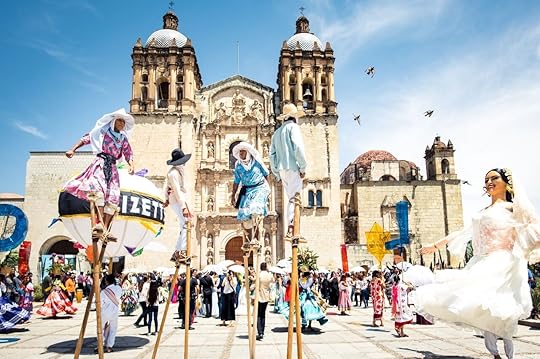
Photo: Raul Luna/Shutterstock
You don’t really know Mexico until you know Oaxaca. This southern state on the Pacific Coast of Mexico is famous for its cultural diversity and the preservation of its indigenous heritage, and there is no better place to experience the true colors of the region than in Oaxaca City. The streets of Oaxaca — lined with impressive colonial buildings, the bustle of traditional markets, and public plazas — can instantly transform from tranquil and quiet into full-blown festivity, and it won’t be long before you run into a wedding taking over the streets around Santo Domingo Cathedral as if it were carnival season.
Day trips from the city offer great opportunities to shop for local crafts, try all the varieties of mezcal, and witness the cultural richness that characterizes small-town Mexico. Explore a little further outside the city and you will find the archaeological remains of the ancient cities of Monte Alban and Mitla, but also unique natural wonders like the petrified waterfalls of Hierve el Agua and the impressive Tule Tree — a Montezuma Cypress tree famous for having the stoutest trunk in the world.
But let’s talk about food. Oaxaca is one of those places where finding a bad meal will not be easy. The rich flavors of hoja santa, chapulines, and mezcal are present in every single merendero and in the aisles of every market. For a truly immersive experience, visit Mercado 20 de Noviembre and follow your nose to the Pasillo de Humo where fresh meat is sold by the kilo but also prepared and served on delicious tlayudas — huge tortillas topped with beans and Oaxaca cheese. Consider also a visit to Los Pacos for the best mole in Oaxaca and to Sabina Sabe for a dinner full of local flavor and mezcal cocktails.
Puerto Vallarta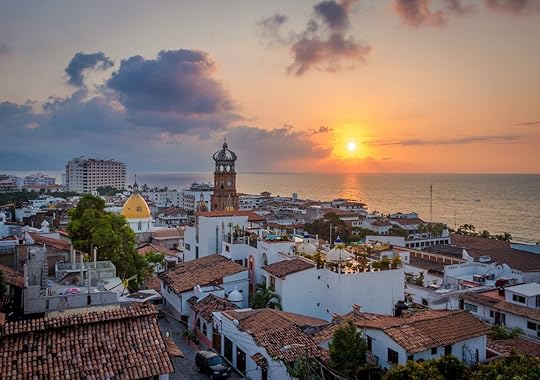
Photo: Diego Grandi/Shutterstock
In the tropical mountains that border Banderas Bay, Puerto Vallarta feels wild and tropical, but also quaint and pampering. Contrasts abound in this city that feels like a small Mexican village and a high-end resort town. A tranquil evening exploring the art galleries of Zona Romantica around the Cuale River and catching the sunset from the boardwalk will make you consider staying here longer than expected, which probably explains the large expat community that has enhanced the town’s diversity.
The wilderness surrounding Vallarta is packed with adventures for the whole family and some of the best coastal destinations in Mexico are easily reachable from here. This includes the pristine beaches of Riviera Nayarit — where local favorites like Sayulita, Punta Mita, Litibu, and San Pancho are just a few miles away from each other. There’s also the famous Hidden Beach or Playa del Amor, an underground crater beach that’s easily reachable by boat from Puerto Vallarta.
If you’re looking for one of the best all-inclusives in Mexico or you want to experience a day of adrenaline rappelling down tropical waterfalls and swinging through the canopies of The Predator movie set, Puerto Vallarta has an incredible variety of options for different travelers. On top of this, the town is famous for its active nightlife scene and gastronomic offer, and also for being one of the first openly LGBTQ+ destinations in Mexico.
Cozumel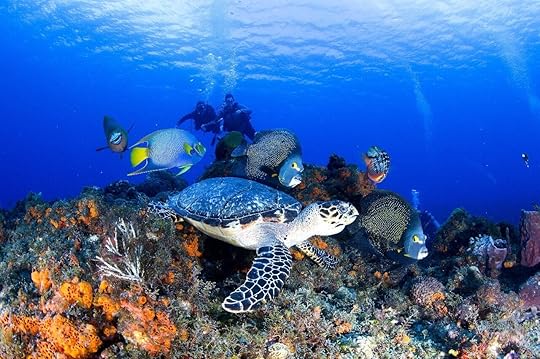
Photo: J.S. Lamy/Shutterstock
If you are visiting Mexico in search of those picture perfect beach vacations, ditch Cancun from your itinerary and fly directly to Cozumel. This is one of Mexico’s largest islands and it has all the natural beauty you would expect from a Caribbean getaway, without the overwhelming development and tourist crowds common to its mainland counterparts.
Snorkeling and scuba diving are the best ways to explore Cozumel’s natural surroundings, which include underground caverns, coral reefs, and the submerged sculptures of the Museo Subacuatico de Arte. It comes to no surprise that Jacques Cousteau declared Cozumel as one of the best diving destinations in the world. Not in the mood for diving? Head to Tortugas Beach for a day of white sands and turquoise waters or take a catamaran tour of El Cielo, a sandbar off the coast of the island that gets its name from the hundreds of sea stars you can admire at close distance.
The secluded nature of the island doesn’t mean it lacks accommodation options. Beachfront villas, luxurious condos, and hotels are all readily available. Also, keep in mind that Cozumel is one of the preferred spots in Southwest Mexico to shop for jewelry.
Merida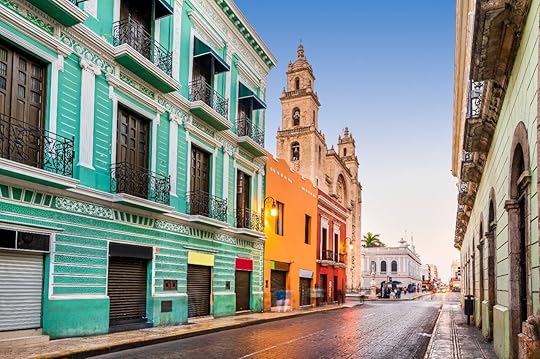
Photo: cge2010/Shutterstock
Merida is the best option to explore the northeastern side of the Yucatan Peninsula. The town itself is a place that seems to exist out of time, with manors and estates that were built in the 1800s during the boom of henequen, an agave fiber that boosted the local economy and helped the rapid development of the town. These architectural marvels are scattered all around Merida and heavily congregate in the impressive Paseo de Montejo, just a few minutes away from the city’s historical center. Most of these mansions have been transformed into museums and galleries, which makes it easy to explore the interior as well as the gardens.
If you want accommodation that maintains the quaint vibes of Merida, try Casa Vagantes, a beautiful design-focused stay in the outskirts of the historic center that is ideal for couples.
The food offer of the Yucatan Peninsula is unlike anything you’ll find in the rest of Mexico. The flavourful cochinita pibil — slow roasted pork cooked inside an earth oven and spiced with lime, achiote, and habanero chiles — might be the star of the show, but don’t leave without trying panuchos, papadzules, kibis, salbutes, and a steamy bowl of lime soup. For a memorable dining experience that encompasses the rich gastronomic tradition of the Peninsula, head to Micaela Mar & Leña, definitely the best restaurant in town. Also pay a visit to La Negrita, a lively cantina favored by locals and tourists alike.
From Merida you can easily reach the small Caribbean beach towns of Sisal and Telchac, the yellow-colored town of Izamal, Ria Celestun — a natural preserve famous for its huge flocks of flamingos and countless cenotes. You can also visit the old city of Chichen Itza, one of the most impressive examples of Mayan architecture. And for those interested in shiny souvenirs should pay a visit to the neighboring city of Valladolid, famous for its gold jewelry.
Guadalajara
Photo: T photography/Shutterstock
Guadalajara is the second largest city in Mexico and the capital of the state of Jalisco. This region is home to some of the most renowned Mexican expressions in the world, including Mariachi music and tequila. The historic center of Guadalajara hosts an impressive collection of historical buildings and public plazas that make it stand out from most Mexican cities. Teatro Degollado, the Guadalajara Cathedral, a night out at Chapultepec, and a visit to the archaeological site of Guachimontones are just a few of the unmissable experiences to have in Guadalajara. La Perla de Occidente is also the perfect base for exploring the agave fields of tequila, the beautiful Chapala Lake, and the picturesque small towns of Mazamitla, Tapalpa, and Lagos de Moreno.
Meat lovers should consider a visit to Karne Garibaldi, a place that specializes in carne en su jugo — a flavorful stew of beef and bacon — and promises you’ll have a hot plate of meat in front of you in mere instants (18 seconds to be exact). If you want to try the local seafood specialties, look no further than Bienvenido Pariente. Looking for gourmet tacos? Head to Habanero Negro. And those who like spicy food should not leave Guadalajara without trying tortas ahogadas, the traditional carnitas sandwich bathed in super-hot red salsa. A good option to try this iconic dish is Tortas Toño.
Mexico City
Photo: Raul Luna/Shutterstock
The capital of Mexico is a must-see destination for any traveler. It doesn’t matter if you’re staying for a weekend, a couple weeks, or a couple months, there’s an itinerary that will fit your needs. Here you’ll be able to explore the history and the transformations of the country through its architecture and its dozens of world-class museums. Pyramids, colonial palaces, century-old cathedrals, gigantic urban forests — Chapultepec Park is twice as big as New York’s Central Park — and even a castle are all common sights in Mexico City. But the city also has a contemporary side that’s worth exploring; this includes Roma and Condesa, two neighborhoods where you’ll find an active international community and an exploding cultural and culinary scene.
Mexico City also offers plenty of day trip opportunities, including the famous pyramids of Teotihuacan, the picturesque towns of Tepoztlan and Malinalco, and the beautiful Puebla, famous for having some of the best food in the whole of Mexico. 
June 6, 2022
The 24 Top-Rated Drag Brunches in the United States

Pride Month is a time of celebration that the LGBTQ+ community looks forward to every year. With colorful parades, music festivals, and dance parties across the country, as well as new events popping up every year, it’s no wonder why.
But there’s one celebrated tradition that you can participate in all year long: drag brunch. Brunch food and mimosas just happen to pair perfectly with snatched wigs and outlandish makeup on these special performers while they vogue, perform skits, and lip sync for their lives. To help find the best drag brunches that you don’t want to miss, Yelp compiled a list of the top-rated drag brunches in the United States.
The third top brunch in the US is Haswell Green’s in New York City that offers bottomless brunch for 90 minutes for just $25.
“The drag show is really fun and the live music is always brilliant! Staff are super friendly and always make sure we have a great time!” said Kiara C from Manhattan in a review.
The second most favored brunch is the Palace Bar in Miami Beach. The Palace is a must-visit in South Beach as a LGBTQ+ bar that’s been serving the community since 1988. You might even spot some celebrities like Nene Leakes, Ross Matthews, or Perez Hilton.
“The music and dancers were great, the food was quick and the server was attentive. Definitely worth your money. Great entertainment at a great price and the crowd/guests get really into the show,” said Tina S.in a review.
And the top drag brunch spot in the country is The Country Club in New Orleans. The Country Club is known as a tucked away treasure with an elegant ambience and delicious cuisine. Top that off with amazing performers and you’re sure to have the time of your life.
“The host of the drag brunch killed me, I’ll be taking some of his one-liners with me. The show was great, the queens were great. Food was awesome and the ambiance was out of this world. If you are in New Orleans I highly recommend making brunch at the country club one of your destinations,” said Ali B. in her review.
The 24 best drag brunches in the United StatesThe Country Club in New OrleansPalace Bar in Miami BeachHaswell Green’s in New York CityR House Wynwood in MiamiNellie’s Sports Bar in Washington DCThe Garden in Las VegasPerry’s Restaurant in Washington DCThe River Kitchen and Bar in ChicagoCC’s Kitchen in Louisville, KentuckyAnzie Blue in NashvilleThe Hub Louisville in Louisville, KentuckyLush in MinneapolisLe Moo in Louisville, KentuckyLips – Florida in Oakland Park, FloridaGodfrey’s in Richmond, VirginiaBoheme in Houston, TexasOscar’s Downtown Palm Springs in Palm Springs, CaliforniaUnion Rooftop in MinneapolisBaby’s in IndianapolisThe Abbey Food & Bar in West Hollywood, CaliforniaIrene’s in Austin, TexasLa Pulperia Hell’s Kitchen in New York CityCroc’s in Virginia Beach, VirginiaSuzy Wong’s House of Yum in NashvilleWhile all the events during Pride month make celebrating easy, don’t forget to celebrate Pride all year long. 
Dive in, Help Out: Save Sea Turtles While Snorkeling at This Luxe Resort

If visions of crystal-blue water, white sandy beaches, and lush green hills sound like your ideal vacation destination, a trip to the British Virgin Islands might be just what the doctor ordered. Fortunately for environmentally conscious travelers, staying at a luxury resort doesn’t have to mean participating in irresponsible tourism. Case in point: Oil Nut Bay in Virgin Gorda. The resort works to preserve the island’s natural beauty and biodiversity. Guests can even head out on a snorkeling adventure that leaves the island even better than they found it.
Oil Nut Bay has 180 villas, meaning half of the 400 acres of Oil Nut Bay remain designated green space. The property prioritizes green energy, using solar panels to generate electricity for its water desalination plants, air conditioning, refrigeration, hot water, community lighting, and more. They use collected rainwater and a greywater desalinization process (a.k.a. reverse osmosis) to recycle water for landscape irrigation.
Guests can participate in eco-friendly activities like kayaking through mangrove forests in glass-bottom kayaks or snorkeling on coral reefs. But a unique, popular activity on the island is taking a turtle tagging trip, during which guests will freedive with a researcher to safely catch turtles. The turtles are measured, tagged, and released in partnership with the resort’s conservation organization. Guests who book the experience will receive information from the resort partner’s marine conservation team on how to track the migration paths of their tagged turtles once they return home.
In April, Oil Nut Bay also opened interactive nature center focused on the ecology of Virgin Gorda and the British Virgin Islands, along with tips and information on how visitors and locals can preserve and protect the environment. And kids and families staying at the resort can take advantage of the ONB ranger program, which rewards kids for activities like learning to kayak or practicing wildlife identification skills and helping the environment. Teaching kids to enjoy spending time in nature helps them become better global citizens and can help them be less stressed and do better in school.
View this post on Instagram
A post shared by Oil Nut Bay (@oilnutbay)
If you spend your time wisely, your relaxing vacation in the Caribbean could be as good for the planet as it is for you. 
11 Park City Airbnbs for the Perfect Mountain Getaway

Not only is Park City Utah’s leading ski and snowboard destination but the resort also hosts the annual Sundance Film Festival and offers a wealth of hiking and cycling adventures. Downtown buzzes with craft breweries, restaurants, and historic attractions. Choose one of these cherry-picked Airbnb Park City rentals as your base for the full après experience.
We hope you love the Airbnb Park City stays we recommend! Just so you know, Matador may collect a small commission from the links on this page if you decide to book a stay. Listed prices are accurate as of the time of publication.
Top-rated Park City AirbnbsLux chalet with steam room and sauna
Photo: Airbnb

Photo: Airbnb
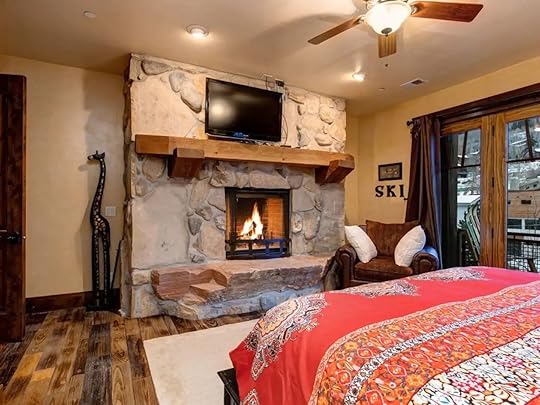
Photo: Airbnb
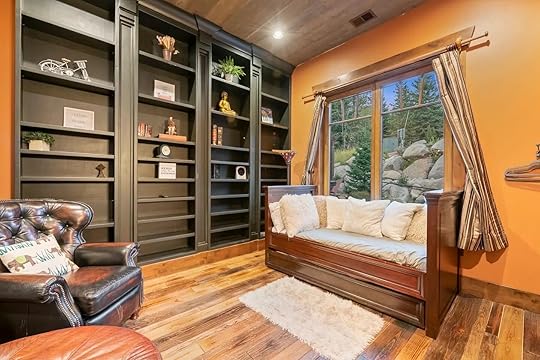
Photo: Airbnb
Newly constructed, this eight-bedroom vacation home is fitted with a games room, hot tub, and movie theater. For added indulgence, there’s a steam room and sauna in the chalet. Perfect for friendship groups as well as families with younger kids, the property comes with children’s toys and equipment. This luxurious chalet is situated in Sunnyside at the junction of Park City and Deer Valley.
Sixteen guests, eight bedrooms
Price: $2,295 per night
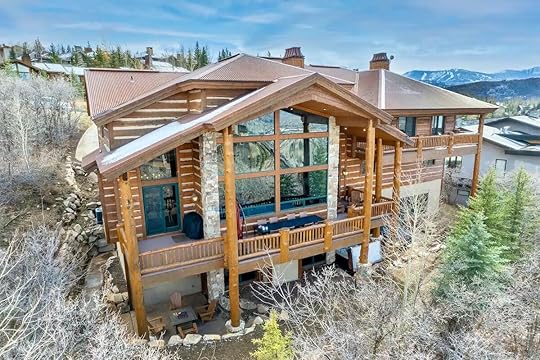
Photo: Airbnb

Photo: Airbnb

Photo: Airbnb

Photo: Airbnb
This lofty mountain house with elevated patios overlooks the surrounding ranges and will inspire you to get out and explore the region. Rooms are spacious with fireplaces and immaculate en suite bathrooms with soaking tubs. This state-of-the-art Airbnb Park City comes with an indoor swimming pool, open-air spa bath, and a games room.
Fourteen guests, six bedrooms
Price: $960 per night

Photo: Airbnb

Photo: Airbnb
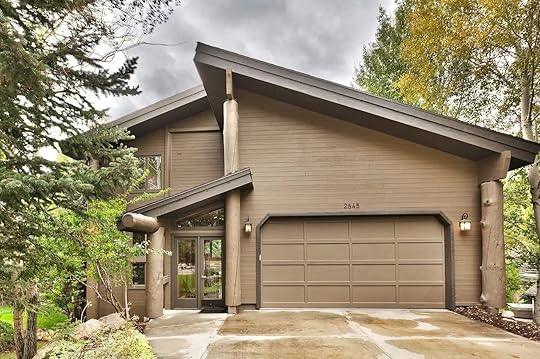
Photo: Airbnb
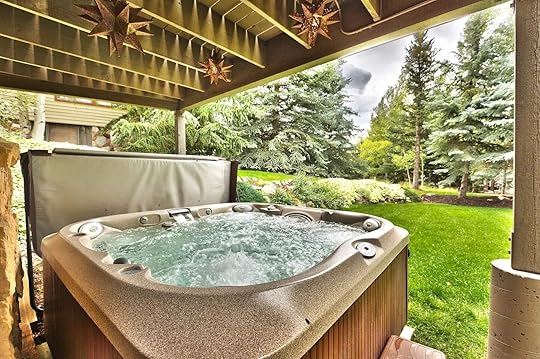
Photo: Airbnb
Conveniently located in lower Deer Valley – minutes away from Downtown Park City, Old Town, and Park City Mountain Resort this five-bedroom Park City Airbnb is a delight whatever the season. The light-filled and roomy space provides mountain views and a generous lawn with a covered hot tub. You’ll receive a gratuitous one-day pass to the Silver Mountain Sports Club and Pool as part of your stay.
Fourteen guests, five bedrooms
Price: $980 per night
Traveling to Utah? Check out Matador’s Utah accommodations guides:Where to stay near Zion National ParkThese Stunning Cabins Are the Ultimate Zion National Park BasecampThe best hotels in Utah for a national parks road tripThe ultimate ‘work and play’ road trip through Utah’s canyon countrySalt Lake City Airbnbs to base your Utah adventure tripNightstar by AvantStay
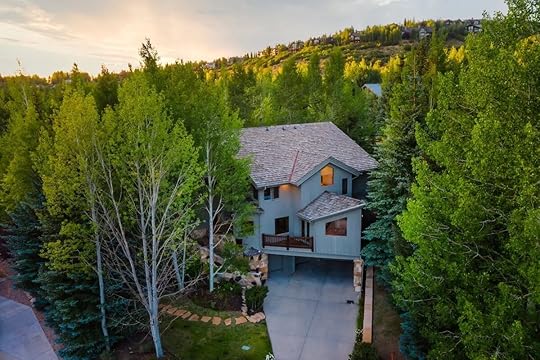
Photo: Airbnb
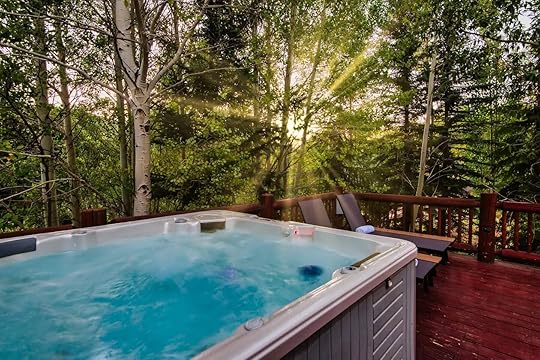
Photo: Airbnb

Photo: Airbnb
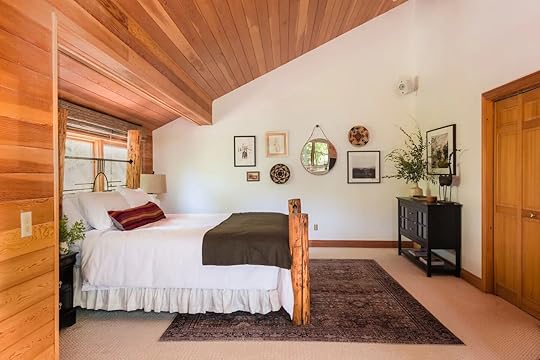
Photo: Airbnb
Conceived for larger groups, this pet-friendly Park City Airbnb is tucked away in the mountains a short drive out of downtown. A sauna, hot tub, games room, and racquetball court provide hours of entertainment once you’ve wrapped up a day of outdoor pursuit. Interiors are framed with fragrant pine with superior linens and upholstery providing the perfect place to unwind.
Sixteen guests, six bedrooms
Price: $3,955 per night
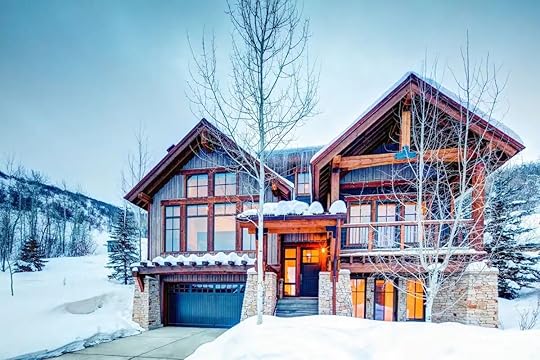
Photo: Airbnb
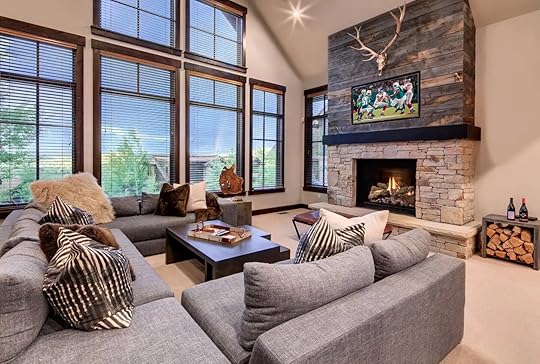
Photo: Airbnb
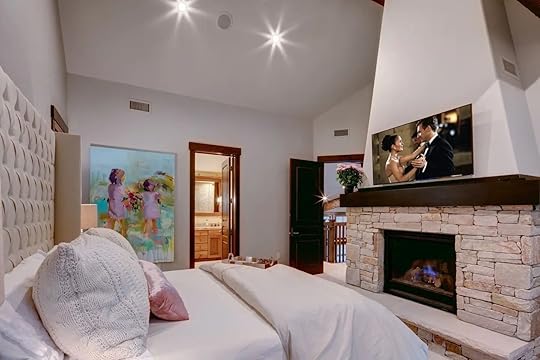
Photo: Airbnb
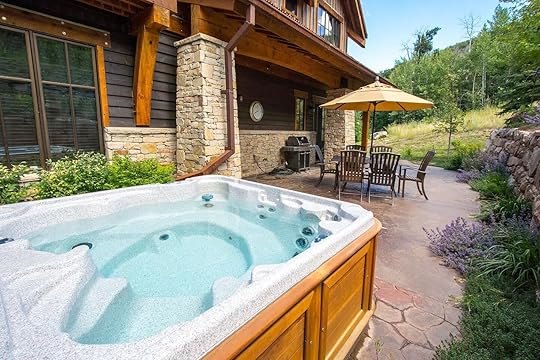
Photo: Airbnb
Located at Park City Mountain, this Airbnb for larger groups comes with direct access to the slopes. Ski-in/ski-out in winter and use it as a cycle base for warmer months. The Silver Star is fitted with a gourmet kitchen, Sonos speakers, a heated driveway, and a hot tub. Guests have access to a heated pool and complimentary shuttle service during winter.
Sixteen guests, five bedrooms
Price: $1,000 per night
Book here
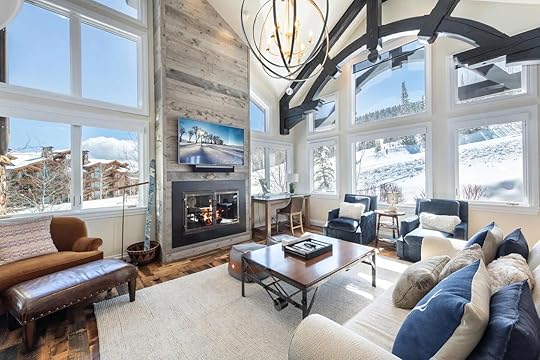
Photo: Airbnb
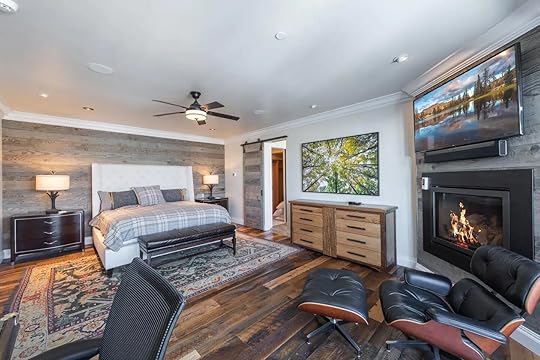
Photo: Airbnb

Photo: Airbnb
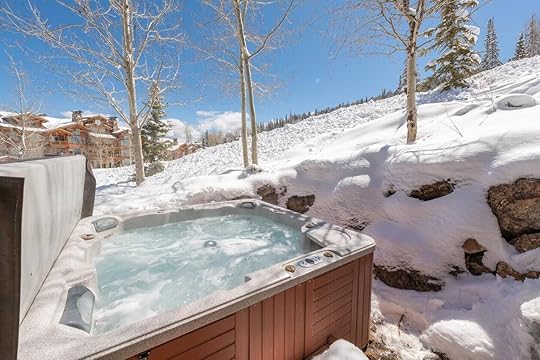
Photo: Airbnb
This five-bedroom luxury townhome is located next to the Northside ski lift and offers ski-in/ski-out access to Deer Valley Resort. The centerpiece of the property is an airy lounge with vaulted ceilings, wood beams, a gas fireplace, and huge windows that provide mountain views. Soaking tubs, fireplaces in the bedrooms, and an outdoor hot tub add après vibes.
Twelve guests, five bedrooms
Price: $1,015 per night

Photo: Airbnb
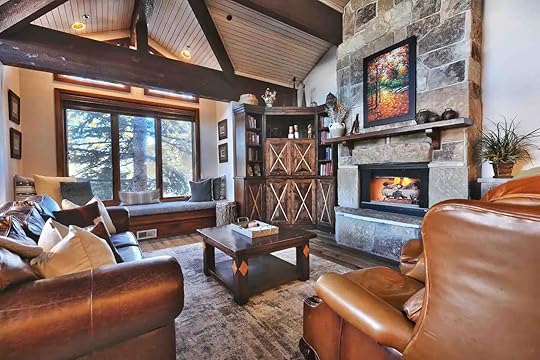
Photo: Airbnb
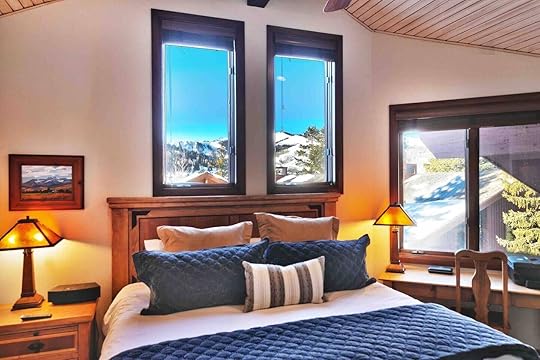
Photo: Airbnb
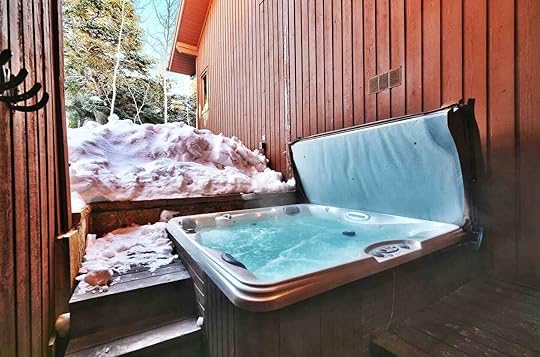
Photo: Airbnb
This homely Deer Valley Airbnb is dressed with dark wooden furnishings and sumptuous seating. Tend to your muscles after a day on the slopes with a soak in the whirlpool bath or the steam shower. Dogs are welcome with prior approval. A deck and private hot tub provide an eyeful of the mountain scenery while lifts are less than five minutes away. Book seven nights of accommodation and the host will arrange a one-day unrestricted ski pass.
Twelve guests, three bedrooms
Price: $995 per night
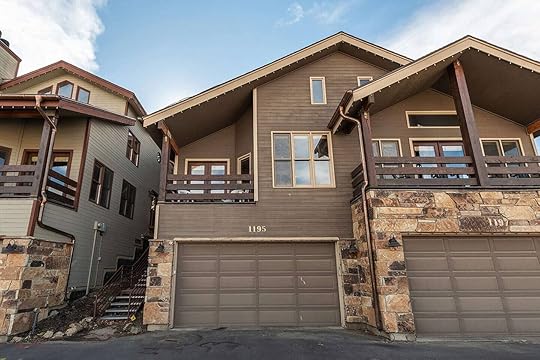
Photo: Airbnb
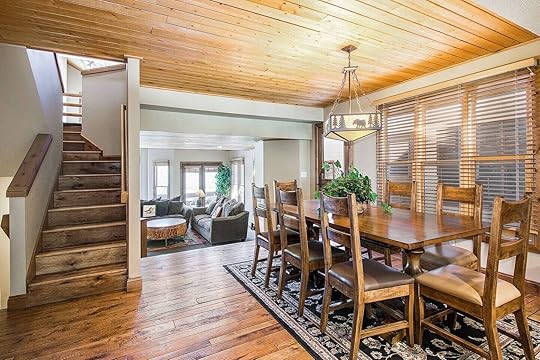
Photo: Airbnb
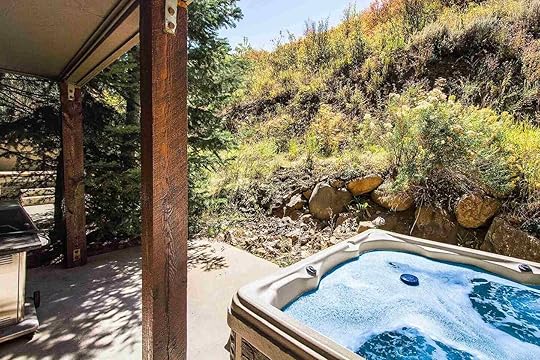
Photo: Airbnb
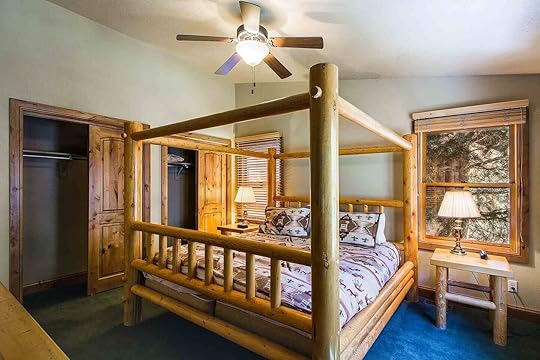
Photo: Airbnb
Granting immediate access to Park City Mountain Resort, this family-friendly Airbnb Park City vacation lodge includes free ski rental and complimentary access to a selection of local activities. An open-plan living room with a wood-burner merges with a kitchen and is overlooked by the loft mezzanine. A compact backyard is equipped with a hot tub.
Ten guests, four bedrooms
Price: $520 per night

Photo: Airbnb
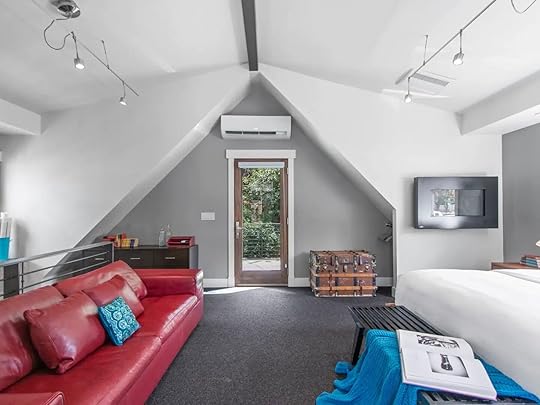
Photo: Airbnb
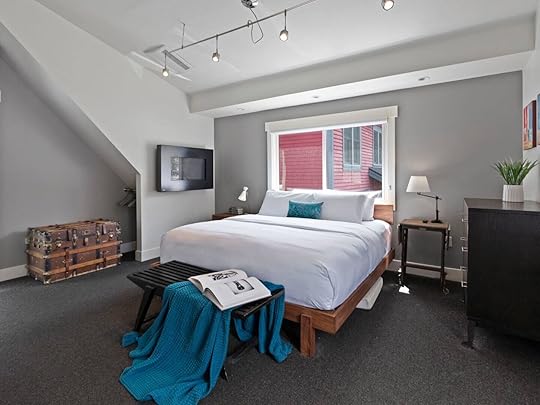
Photo: Airbnb
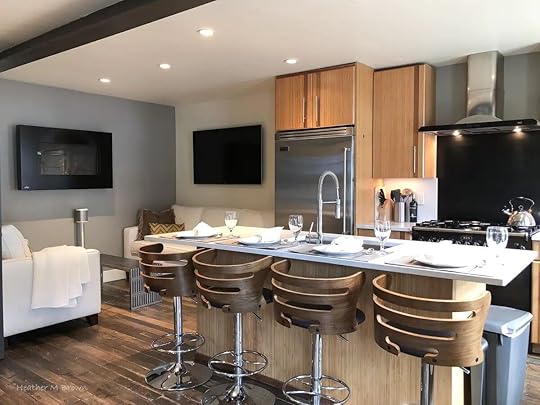
Photo: Airbnb
This chic tiny home Airbnb Park City rental suits either a couple or a small group. The space is thoughtfully conceived for modern travelers with a professional kitchen complete with an aga and Nespresso coffee machine. A loft bedroom is affixed to a balcony with a hot tub. Located 100 feet from Main Street and a short minute drive to all three major ski resorts in the area.
Four guests, one bedroom
Price: $405 per night
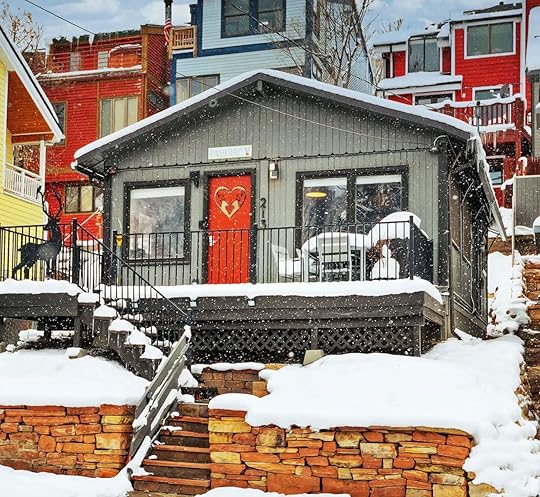
Photo: Airbnb
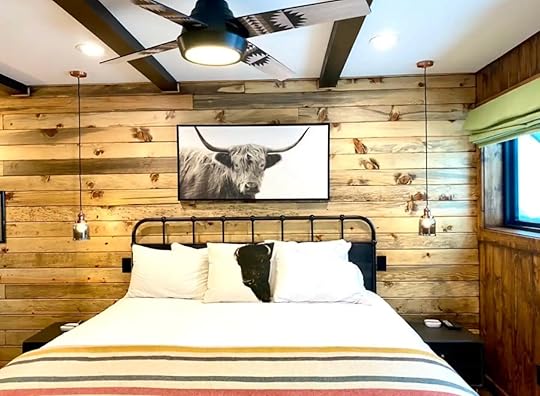
Photo: Airbnb
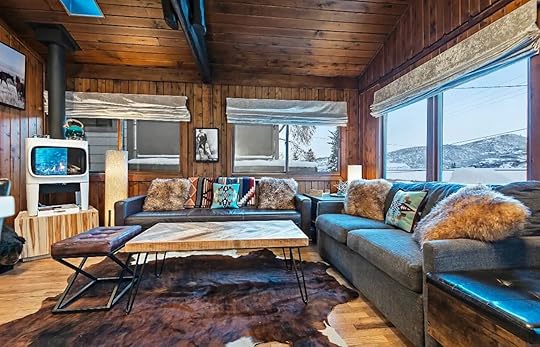
Photo: Airbnb
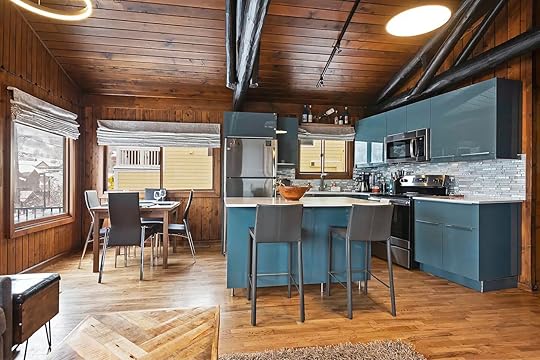
Photo: Airbnb
Despite modernization, this renovated Old Town chalet retains its original 1950s character. A funky blue kitchen spills into a cozily appointed lounge den with western accents while the glitzy shower will leave you feeling sparkly clean. The retro wood burner will keep you warm while admiring the views from the couch. All this, less than five minutes from Main Street.
Five guests, two bedrooms
Price: $260 per night
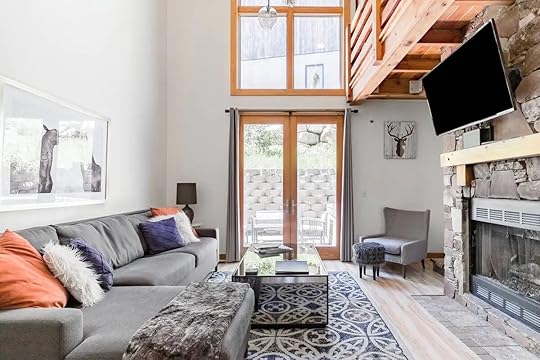
Photo: Airbnb

Photo: Airbnb

Photo: Airbnb
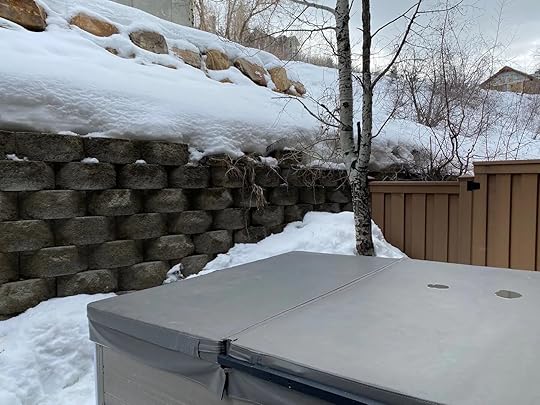
Photo: Airbnb
This trendy Park City Airbnb townhouse is fashionably decorated in a contemporary style with high ceilings and tons of natural light. The interconnected lounge and kitchen make for a sociable experience while prepping a post-slope feast. A snug deck is primed with a grill, seating area, and hot tub. Situated in the foothills just above Main Street, the rental is a 10-minute walk from downtown and handy for hitting the local trails and ski resorts. 
Eight guests, three bedrooms
Price: $410 per night
A Hotel in Miami Launched the Beer Concierge, a Brewery Tour Service
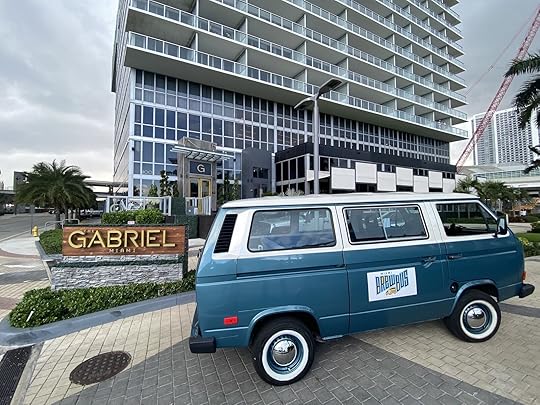
A vacation in a new city often necessitates going out for drinks with friends. If you’re the type of person who researches vacation destinations based on how many breweries are in the city you want to visit, you probably also know that you can spend all day hopping from brewery to brewery, sampling flights of craft beer. But planning such an excursion can be tricky. Should you rent a car? And if you do, who is the unlucky friend who has to be the designated driver? If you’re going to Miami, you might not have to worry so much: The Gabriel Miami just launched a new service called the Beer Concierge, which shuttles hotel guests around on brewery tours.
The Beer Concierge is a partnership with Miami Brew Bus, a tour company which operates out of a vintage VW van and aims to introduce newcomers to the city’s vibrant craft beer scene, which really started to boom around 2014.
Miami Brew Bus offers three packages. Each tour stops at three breweries spread out in different Miami neighborhoods, including the Dogfish Head Brewery, Unbranded Brewing Co., and Lincoln’s Beard Brewing Co. The tours lasts about four and half hours – giving you plenty of time to sip your beers at a leisurely pace. However, it’s the Avenues to Ales tour specifically that starts at the The Gabriel Miami.
Each tour costs $97. Guests get snacks and water on board, and when you start to crave a more substantial meal, most breweries host food trucks just outside their doors. The ticket also includes a tour of the brewery and some inside information into the brewing process. Typically, tour groups are a minimum of six people and smaller groups can specify the are open to taking the tour with other hotel guests when they make their reservation.
The Beer Concierge tours are led by A.T. Milton, who not only owns the company and drives the bus but provides guests with insight into what beers to try and how to pair them with food. You’ll get one pint at each brewery on the house – any additional beer you’ll have to purchase yourself (and guests are encouraged to bring along their own growlers). But feel free to indulge: Guests don’t have to worry about hitching a safe ride – the bus will pick them up and drop them off right at the hotel.
The Beer Concierge is the perfect treat for a birthday or bachelor or bachelorette party – or for all you beer enthusiasts, it could be just a normal afternoon out with friends. You can book a tour through the Miami Brew Bus website. 
17 epic treehouses around the world
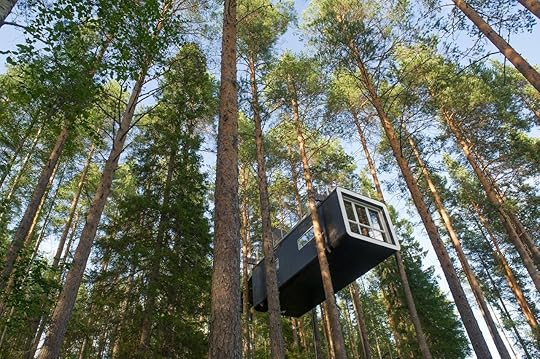
Humans have always felt at home in the trees. It is, after all, where we came from a long, long time ago. But even in the modern age, trees play a very important role in our lives. People who live near trees are known to have better physical and mental health, and the presence of trees is important for preventing climate change.
Awesome treehouses can be found everywhere from Canada to Patagonia, and from New Zealand to Thailand. Here are the world’s most beautiful treehouses you can rent for your next trip.
We hope you love the awesome treehouses we recommend! Just so you know, Matador may collect a small commission from the links on this page if you decide to book a stay. Listed prices are accurate as of the time of publication.
Finca Bellavista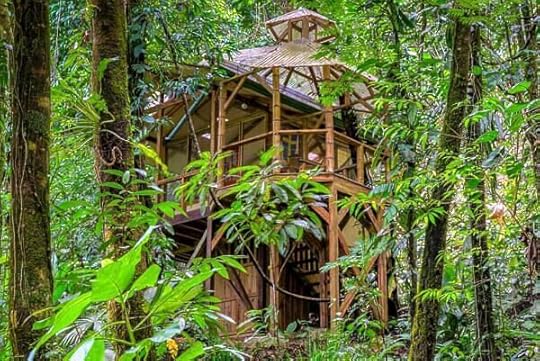
Photo: Airbnb
Finca Bellavista is a sustainable treehouse community in Costa Rica’s rainforest canopies, and it’s probably the closest thing to a quintessential rainforest getaway that there is. You can purchase a parcel to build your own treehouse on, or just crash there for a few nights. They let you zipline between treehouses. There’s miles of hiking trails. There’s waterfalls and rivers to swim in. Birdwatching, garden tours, hammocks — it’s quite possibly the coolest place on Earth.
Several of the units at Finca Bellavista are available for rent on Airbnb. You can also book the entire property.
Rainforest Treehouse with hot springs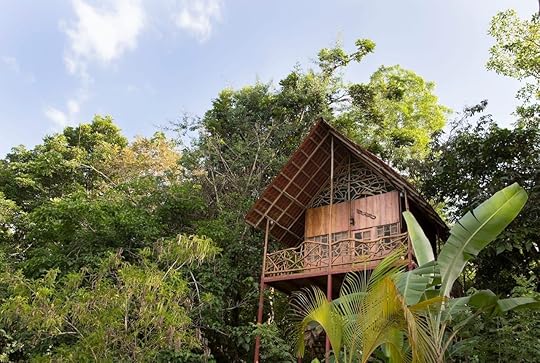
Photo: Airbnb
This treehouse with a wraparound balcony is in Alajuela, Costa Rica, and is adjacent to 15 natural hot and cold springs. Part of the Bio Thermales natural resort, it’s a short drive from the treehouse to Costa Rica’s famous Volcano Arenal. It’s currently $112 a night.
Soneva Kiri Treepod
Photo: Soneva/Facebook
The Soneva Kiri Resort on Koh Kood, Thailand, has a one-of-a-kind feature: “treepod” dining. Basically, you enter the pod on the jungle floor, and then it’s hoisted into the canopy, where you’re served a meal by a waiter — and an acrobat — on a zipline. The views stretch over the ancient forest to the sea, and options range from breakfast to dinner to high tea.
TreeHouse Point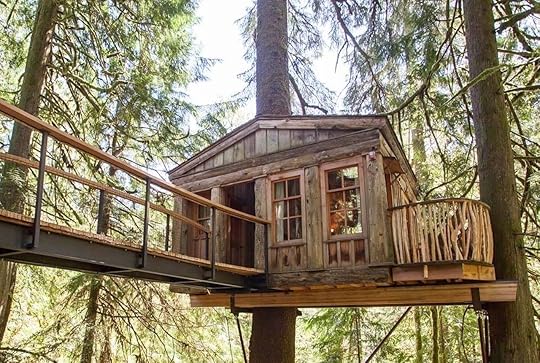
Photo: TreeHouse Point/Facebook
Just outside Seattle in Issaquah, Washington, is the treehouse B&B named TreeHouse Point. Six treehouse rooms sit high along the Raging River, with suspension bridges and twisting staircases connecting visitors to the forest floor. TreeHouse Point also offers yoga classes, tai chi, and massage services for guests.
Taking a road trip? Check out Matador’s accommodation guides to the best places to stay:10 epic treehouses you can actually rent on AirbnbThese Airbnbs make you feel like you’re living in Game of ThronesStay like royalty at these Airbnb Ireland castle rentalsSilky Oaks Lodge
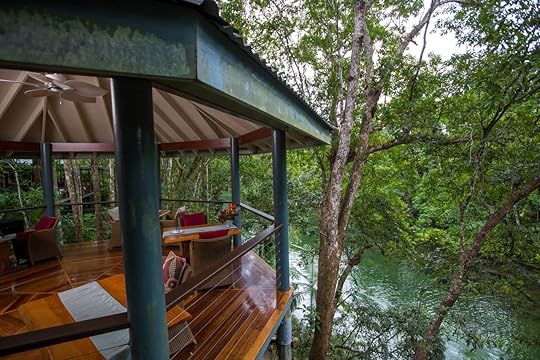
Photo: Silky Oaks Lodge/Facebook
Silky Oaks Lodge is a luxury resort in the World Heritage-listed Daintree Rainforest — recognized as the oldest rainforest in the world — outside Queensland, Australia’s Mossman Gorge River. 40 contemporary treehouses unite around a treetop, open-air restaurant and bar overlooking the river. Silky Oaks (and its onsite spa) will reopen post-renovation in late 2021.
Treehotel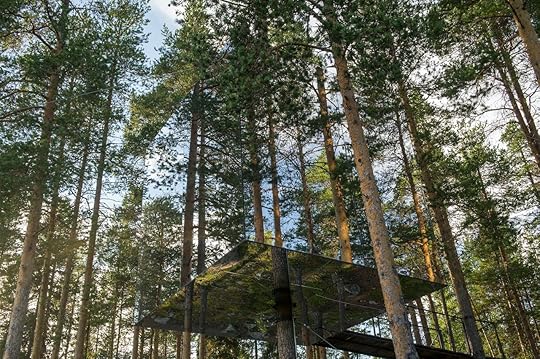
Photo: O.C. Ritz/Shutterstock
The second-to-none Treehotel in Harads, Sweden, has six absolutely incredible treehouse rooms — from the bizarre, alien-themed UFO room to the almost-invisible Mirrorcube, it takes your weirdest ideas about treehouses and runs with them. You’ll spend evenings dining privately (local fare only, naturally), nights lit up by the northern lights, and mornings your imagination running as wild as the landscape.
Nothofagus Hotel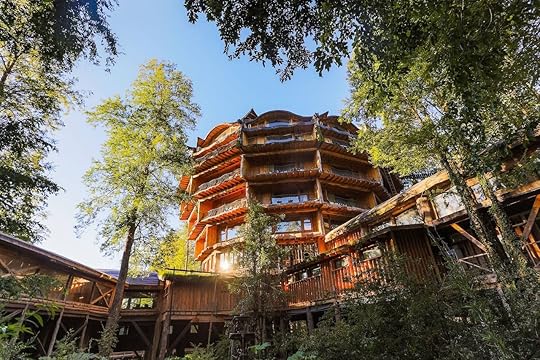
Photo: Nothofagus Hotel & Spa/Facebook
The Nothofagus Hotel is among the treetops of the Huilo Huilo Biological Reserve in Chilean Patagonia. With 55 rooms, this just might be the largest treehouse complex in the world. You’ll also find hot springs, a spa and restaurant on site, and opportunities for hiking, biking, and horseback riding.
Hapuku Lodge and Treehouses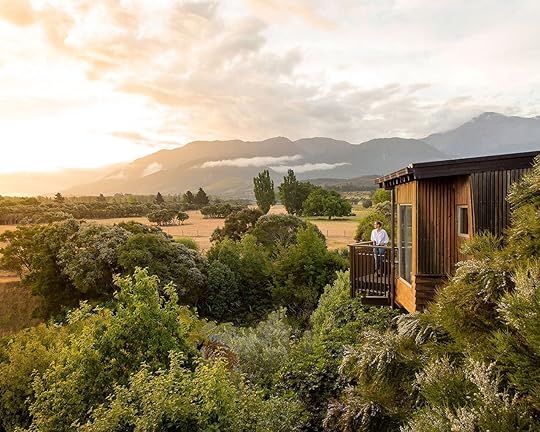
Photo: Hapuku Lodge + Tree Houses/Facebook
Hapuku Lodge is a luxury resort in Kaikoura, New Zealand, featuring a number of 30-foot-tall treehouses that overlook the Kaikoura Seaward Mountains and the Mangamaunu Bay. The contemporary treehouses are big enough for couples or for families, and you’ll spend your days fishing, encountering dolphins, sea kayaking, and swimming with the seals.
Alessandria Treehouse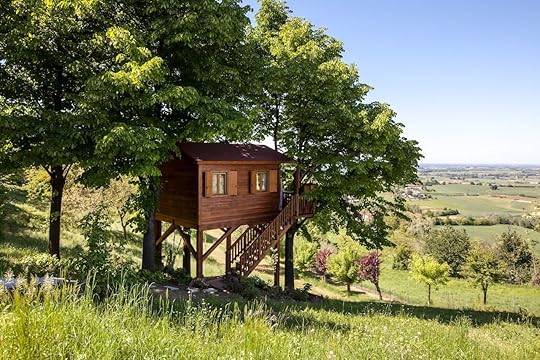
Photo: Airbnb
Another beautiful treehouse available on Airbnb. This one, in Alessandria, Italy, offers free wifi and access to a 19th-century wine cellar. The clean white setup is set amongst linden trees with views over the hills and the massive — 200,000 square feet! — garden. Walking and biking paths are easily accessible for guests.
Free Spirit Spheres
Photo: Free Spirit Spheres Inc/Facebook
Free Spirit Spheres are available for rent (and available for purchase, if that’s your speed) in Qualicum Beach, British Columbia. Suspended from webs of rope, the spherical hotel rooms are accessible through spiral staircases and small suspension bridges. Some spruce, some fiberglass, some painted with Indigenous murals, each combines luxury with eco-friendly minimalism. 
8 Places To See Wild Horses in North America
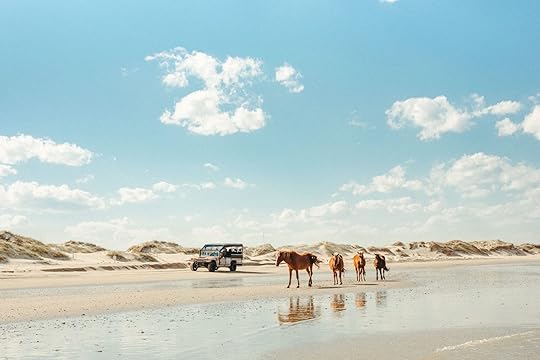
Wild horses represent ideals of unbridled freedom and are an iconic symbol of the American Old West. First descended from Iberian horses brought over by Spanish explorers in the 16th and 17th centuries, today, mustang herds roam not only grasslands and deserts, but coastal regions as well. That includes the Outer Banks in North Carolina and Nova Scotia’s remote Sable Island. And by the way, the name “mustang” actually comes from the Spanish word “mestengo,” meaning “stray beast.”
Thanks in large part to early animal rights advocate Velma Johnston (a.k.a. “Wild Horse Annie”), Congress passed the Wild Horse Annie Act in 1959 to ban the use of vehicles to hunt and chase wild horses on federal lands. That was followed by the Wild Free-Roaming Horses and Burros Act of 1971, which made the Bureau of Land Management (BLM) and the United States Forest Service responsible for protecting and managing wild horses.
But this legislation has not been without controversy, and differences between Congress, ranchers, conservationists, and the BLM have made wild horse management a contentious issue. Thankfully, advocates have rallied to defend wild horses for decades, helping to suspend or stop government roundups and work to manage herd population sizes humanely.
Are there still wild horses in the US?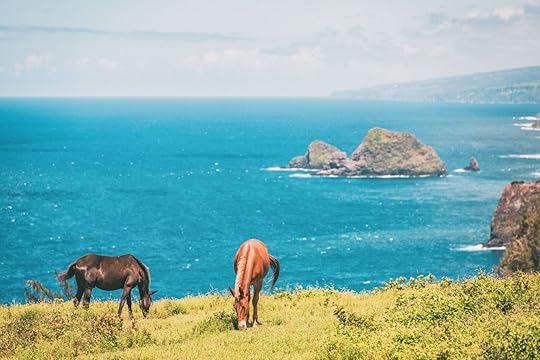
Photo: Maridav/Shutterstock
Yes, there are still many places where there are wild horses in the US. It’s currently estimated that around 86,000 wild horses live across 10 western states. There are even wild horses in Hawaii – the Big Island’s secluded Waipio Valley is home to a small but hardy herd; however, access is restricted for the foreseeable future due to safety and road access issues.
Whether you prefer to kayak, hike, take a boat trip, or ride out on (domesticated) horseback, there are plenty of places and ways to see the most famous and celebrated herds of wild horses across America and Canada, many of which are considered national treasures.
As with viewing any wildlife, keep a 50- to 100-foot distance and turn off your car engine. Never try to feed, touch, or follow the horses, and always keep dogs on a leash. Be respectful of their space and behavior, especially mares and their foals, or stallions (males) challenging one another.
Where to see wild horses in the USSteens Mountain Wilderness, Oregon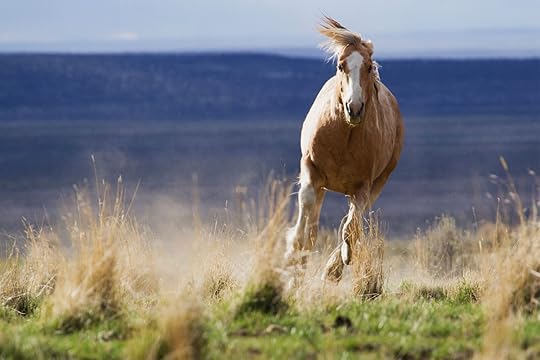
Photo: Danita Delimont/Shutterstock
One of Oregon’s most rugged and remote locations is also home to one of the country’s most magnificent wild horse herds – the Kiger mustangs. They’re known for their light brown bodies, dark tails, and semi zebra-striped legs. They’ve long been associated with the Wild West, and Steven Spielberg’s DreamWorks studio purchased a Kiger mustang colt to use as its model for its 2002 animated feature film “Spirit: Stallion of the Cimarron” about the life of an 18th-century wild horse in America.
The best way to view Kiger mustangs in the wild is on a guided ride with the Steens Mountain Guest Ranch or by setting up camp for a night at the South Steens Campground.
Sand Wash Basin, Colorado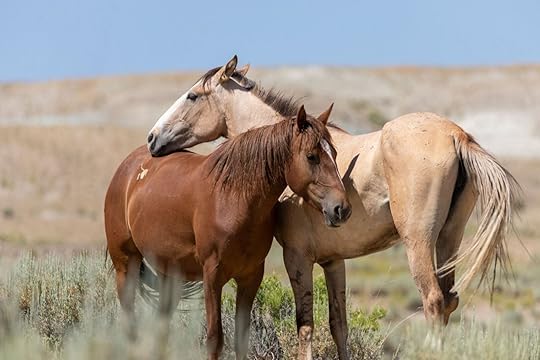
Photo: Tom Tietz/Shutterstock
It would be remiss to talk about wild horses without mentioning potentially America’s most famous one – Picasso. The handsome pinto stallion was a fixture of the Sand Wash Basin HMA (Herd Management Area) for more than 30 years, drawing fans from around the world. The HMA is in the northwest corner of Colorado and most roads are gravel, dirt and, sand, so a high clearance AWD or 4WD vehicle is recommended. First-time visitors can follow the “Wild Horse Loop” (marked in red on the map) to look for new stallion stars, Hoot, Jasper, and Cresciente.
Tonto National Forest, Arizona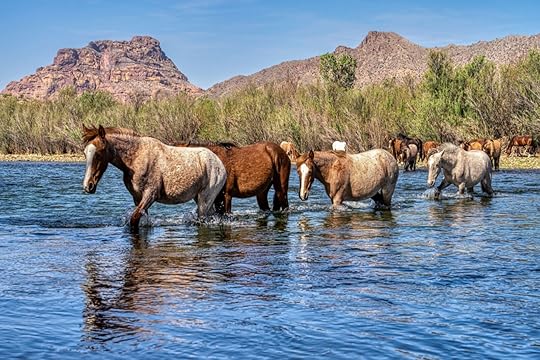
Photo: Brent Coulter/Shutterstock
Wild horses had lived around the Salt River in Mesa long before the Tonto Forest received its national forest designation in 1907. Saved from removal five years ago by the non-profit Salt River Wild Horse Management Group, visitors today can usually see families of horses at recreation sites along Bush Highway, including Coon Bluff, Phon D, and Pebble Beach. You’ll need to purchase a Day Use or Discovery Pass to park in or explore Tonto National Forest.
Booking a kayak or paddleboarding trip is probably the most popular way to see the horses during the warmer months when they come to swim and cool off along its banks.
Assateague Island, Maryland and Virginia
Photo: NPS/Public Domain
A barrier island isn’t the first place that comes to mind when thinking about wild horses, but 300 of them freely wander the beaches and park roads on Assateague, and kayaking or taking a day cruise are popular ways to see them. Once thought to be descended from horses that swam ashore from a Spanish galleon, historians now believe they’re descendants of horses brought over to graze from the mainland.
The Maryland herd roams the Assateague seashore and is managed by the National Park Service, while the Chincoteague Volunteer Fire Company privately owns the Virginia herd. Every July, “Saltwater Cowboys” – mostly firefighters and volunteers – swim the Chincoteague ponies across the channel at low tide to auction off foals before swimming adult horses back again.
Dugway, Utah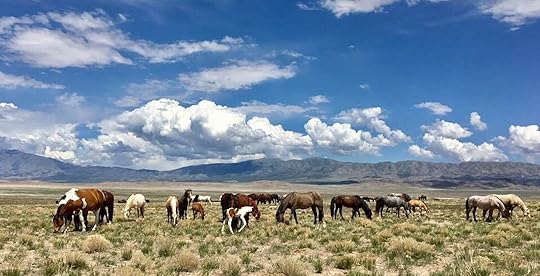
Photo: Keri Bridgwater
The foothills between Rush Valley and Vernon are the best places to spot the wild horses of the Onaqui Mountain Herd, reachable with an easy 60-mile drive southwest of Salt Lake City. It’s thought that US cavalry and early settlers brought horses to this area in the late 1800s. It’s a relatively large herd with around 450 horses.
One band lives along The Pony Express Road, once used by the famous mail delivery service of the late 1800s. Take I-80 west to Exit 77, then turn left at the stop sign and follow UT-196 to the Dugway Proving Grounds main gate. A dirt road west of the church will take you to Pony Express Road, where you should be able to see horses of all colors and patterns, including sorrels, roans, pintos, and palominos.
Pryor Mountain Wild Horse Refuge, Montana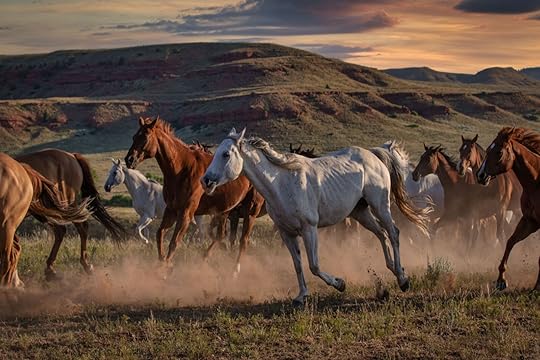
Photo: Christy berry/Shutterstock
The first nationally designated area established to provide a home for free-roaming wild horses, the Pryor Mountain Wild Horse Range is home to around 120 members. It’s 50 miles south of Billings and covers acres of desert shrubbery and subalpine forests across its roughly 43,000 acres. It straddles the southeastern section of Carbon County, Montana, and northern Big Horn County, Wyoming – about as quintessentially “Wild West Country” as you can get.
Stop by the Pryor Wild Mustang Center in Lovell for maps and directions on where best to catch a glimpse of the horses. For an organized activity, the best way to see Pryor Horses in their homeland is on a Jeep tour with local outfitters Pryor Wild, which runs tours May through September.
Outer Banks, North Carolina
Photo: Wild Horse Adventure Tours
Get behind the dunes with a self-guided walking tour or take a Wild Horse Adventure Tour to see the famous Colonial Spanish Mustang wild horse herd that roams Corolla and Carova beaches in the northern Outer Banks. There’s also a second wild herd at Shackleford Banks on the Cape Lookout National Seashore. Historical research and genetic testing indicate that the present-day Ocracoke and Corolla wild horses descend from Spanish breeds whose history dates to the 1500s.
Sable Island, Nova Scotia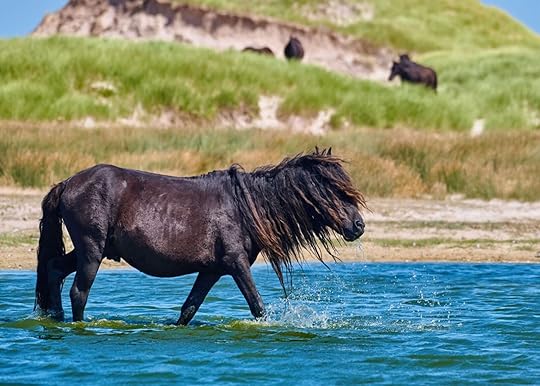
Photo: JoeMWilson/Shutterstock
More than 100 miles off the Nova Scotia coast, Sable Island became Canada’s 43rd national park in 1993 and is a testament to survival in an unlikely environment. Its hardy, pony-sized wild horses, introduced in the 1700s and federally protected in 1961, roam freely, sharing the island’s sandbanks and beaches with the world’s biggest breeding colony of gray seals.
Visitors can arrive by charter boat and plane between June and October but should be prepared for weather delays, which can run for days. An employee-guided, two-hour walk with Parks Canada costs $153.50 on top of the $25.50 day-use fee. You can also book flight and tour combos with Kattuk Expeditions or Breton Air. 
Matador Network's Blog
- Matador Network's profile
- 6 followers



